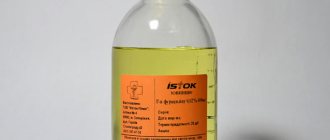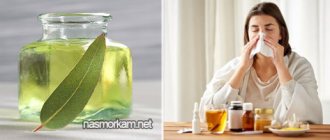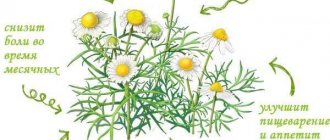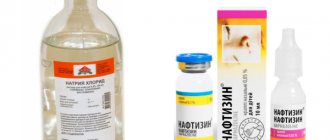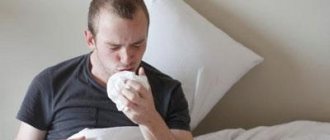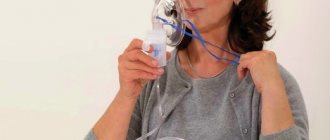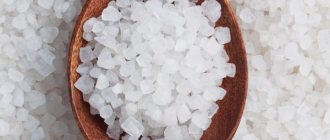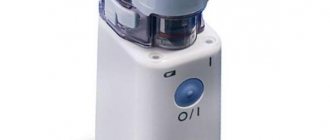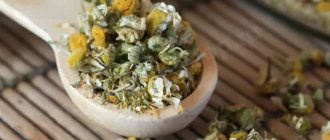How does the inhaler work?
The word "nebulizer" was first used in 1874.
It denoted a device that converted a liquid substance into an aerosol and was used for medical purposes. The first inhalations of resin vapors were used for tuberculosis patients. Nowadays the word “nebulizer” is often replaced with the word “inhaler”. The main goal of nebulizer therapy is to deliver a medicinal dose of a drug in aerosol form to the respiratory tract in a short period of time. Continuous delivery of microscopic particles over several minutes creates a high concentration of the drug in the respiratory tract with a low likelihood of side effects. The inhaler copes well with the treatment of acute and chronic diseases, since medicinal particles from the device enter all parts of the respiratory system. The effect of such inhalation is noticeable from the first procedures, since the medicine not only gets inside, but, being sprayed in the body, settles on the inflamed areas.
Indications for use of the nebulizer
- Prevention and treatment of diseases of the upper respiratory tract: runny nose, swelling of the nasopharynx, acute respiratory infections, ARVI, etc.;
- Treatment of diseases of the trachea and larynx: pharyngitis, tracheitis, laryngitis, etc.;
- Treatment of diseases associated with inflammatory processes in the lower respiratory tract, alveoli and bronchi: bronchitis, asthma, pneumonia, etc.;
- Treatment of allergic reactions of the body, which are accompanied by a runny nose, sneezing, sore throat and cough;
- Preventive postoperative measures if the respiratory organs were damaged during the operation;
- Preventive inhalations after respiratory surgery.
Precautions when using nebulizers
The dangers of steam inhalation: video
How to handle electric inhalers:
- The inhaler is installed on a flat table surface;
- To avoid overheating, do not close the air intake of the device;
- Children should use the nebulizer under adult supervision;
- After using the device, you must disconnect it from the electrical network;
- Do not: place the device in water, under a water drain or in a shower stall, or use it while swimming;
- You cannot come up with solutions of medicinal mixtures on your own;
- The inhaler cannot be used for inhalation anesthesia and artificial ventilation;
- The use of inhalation at body temperatures above 37 C is highly undesirable;
- Before starting inhalation, consultation with your doctor is necessary.
What can and cannot be put into a nebulizer?
The nebulizer can be filled with solutions of medications to treat respiratory diseases, but a number of drugs cannot be used due to pharmacological and physical characteristics (see table).
| Goal of treatment | Allowed | Forbidden |
| Elimination of bronchospasm, asthma attacks | Berodual solution for inhalation, Ventolin nebula | Papaverine, Euphyllin (act only after entering the blood) |
| Mucus thinning | ACC injection, Fluimucil solution | Acetylcysteine syrup (due to sugar ingestion) |
| Bronchial cleansing, expectoration | Ambrobene solution, Lazolvan solution | Cough syrups (due to sugar ingestion) |
| Treatment of bronchial asthma with hormones | Pulmicort nebula, Budenit nebula | Prednisolone or Dexamethasone ampoules (have a systemic effect) |
| Antiseptic effect (disinfection) | Decasan, Dioxidin, Miramistin, Chlorophyllipt alcohol solution | Oil solution of chlorophyllipt (oil clogs bronchioles and alveoli) |
| Killing bacteria (antibiotics) | Gentamicin solution, Fluimucil antibiotic | Ampicillin, Benzylpenicillin (no local action) |
| Treatment of a viral infection | Interferon, Derinat | Syrups, herbal decoctions, essential oils, suspensions (not suitable for spraying through a nebulizer, they worsen breathing) |
Can I have some water?
Water is not used to refill the nebulizer, even in purified and boiled form, since it is impossible to exclude the ingress of impurities and small particles invisible to the eye. This causes difficulty breathing, which delays the healing process. To dilute medications, only sterile saline solution is used. It can also be a remedy for allergic diseases, viscous, difficult to separate sputum in pregnant women and young children.
Non-carbonated mineral water is allowed for inhalation through a nebulizer for colds and runny nose, but it is necessary that the size of the sprayed particles be more than 3 microns. The function of changing the dispersion (degree of grinding) is not available in all devices, so it is better to use the pharmaceutical preparation Soda Buffer for alkaline procedures.
The ingress of non-sterile mineral water into the smallest parts of the bronchi is especially dangerous if the immune system is reduced; it can cause an inflammatory process.
We recommend reading about how to do inhalations with a nebulizer. From the article you will learn about when you need to do inhalations, the procedure algorithm, how to care for the device afterwards, and how to breathe correctly when inhaling with a nebulizer.
And here is more information about whether it is possible to do inhalations at a temperature.
Is there a difference if the inhaler is a compressor?
A compressor inhaler crushes liquid into small particles using a stream of air pumped by a compressor under pressure. In this case, the structure of the drug does not change. Therefore, it is considered the most versatile device. Ultrasound devices destroy antibiotics and hormones, but they are suitable for all other drugs.
A MESH inhaler is considered a good option for the treatment of chronic diseases of the bronchi and lungs. It is a combination of compressor and ultrasonic. It is small in size and can be carried with you. The disadvantage is the price, it is almost 2 times higher than for other nebulizers.
Little Doctor mesh nebulizer
The procedure for inhalation with a nebulizer
| 1 | Before starting inhalation, the patient must take a sitting position, place the device on a flat surface, and remove all foreign objects (chewing gum or leftover food) from the mouth; |
| 2 | Depending on the type of inhalation, it is necessary to use a mouthpiece or a nosepiece, or an inhalation mask. Each patient must use individual attachments, or thoroughly boil or disinfect with special antiseptics after each use. This must be done in order to avoid transmission of infection to other patients; |
| 3 | Solutions for inhalation must be prepared under sterile conditions. To prepare medicinal mixtures, 0.9% sodium chloride or saline solution is used as a solvent. Do not use tap (even boiled) water to prepare an inhaled medicinal solution; |
| 4 | The inhalation procedure lasts for 5-10 minutes; |
| 5 | From 1 to 3 procedures are performed per day; |
| 6 | The course of treatment is no more than 7 days. |
Inhalation for a runny nose
Indications for the use of nebulizer inhalations are swelling of the nasal mucosa. Both an ultrasonic nebulizer and a compressor, steam or membrane nebulizer can cope with a runny nose.
The greatest effect in treating a runny nose can be achieved using a steam nebulizer. Only steam inhalations can be performed using essential oils, which will relieve congestion and relieve sore throats. When using a compressor inhaler, the main thing is to correctly install the spray nozzle, which can crush medicinal particles to a size of 5-10 microns and allow them to settle in the nasal cavity.
When coughing
The presence of a cough in a patient may indicate a variety of diseases: from acute respiratory infections and acute respiratory viral infections to bronchial asthma and pneumonia. The doctor is guided by the type of cough (dry, chesty, with sputum, etc.) when making a diagnosis. Do not try to identify and diagnose yourself. Do not self-medicate, but consult a doctor in time. Most often, the presence of a cough is an indication for a doctor to prescribe inhalation with a nebulizer.
Depending on the disease, you should choose the type of device and medicinal solutions for inhalation. Let's look at a table that indicates which medications are allowed to be used in a specific type of nebulizer, and which ones are highly undesirable to use.
Application of solutions
| Drug mixture/nebulizer type | Ultrasonic | Compressor | Membrane | Steam |
| Soda solution | + | + | + | + |
| 0.9% and 2% physical. solution (sodium chloride) | + | + | + | + |
| All herbal solutions | — | + | + | — |
| Essential oils | — | — | — | — |
| Medicinal mixtures using mucolytics and secretolytics | — | — | — | + |
| Mineral water | + | + | + | + |
Attention! Today, many doctors consider mineral water inhalation DANGEROUS and recommend using it only in a steam nebulizer. Read more in the article: The dangers of inhalation with a nebulizer.
It is extremely difficult to list all diseases and specific indications for using a nebulizer. However, knowing what medicine the doctor prescribed for inhalation, the patient can, by referring to this table, find out which type of nebulizer is suitable for him in the treatment of his disease.
What drugs are used in the nebulizer?
The doctor chooses the drug that is poured into the nebulizer, depending on the purpose of treatment. It is also important to take into account the method of inhalation - for example, for a runny nose and sinusitis, adenoids, it is better to breathe through nasal cannulas, and for procedures for a sore throat, sore throat and laryngitis, a mouthpiece is suitable. The mask is universal; it is most often used in young children for asthma and bronchitis.
With a runny nose
In case of acute runny nose against the background of a cold, inhalations with Furacilin solution, saline solution, Fluimucil, eucalyptus tincture are prescribed, and in the midst of an ARVI epidemic, Interferon is used. There are 2-3 sessions per day for 3-5 days. Doses for adults and children are shown in the table.
| A drug | How to prepare a medication solution | For an adult | For a child | ||
| Medicine volume | Volume of saline solution | Medicine volume | Volume of saline solution | ||
| Furacilin | One tablet per 100 ml of boiling saline until completely dissolved | 4 ml | Not needed | 3 ml | 1 ml |
| Saline solution | Ready drug | — | 4 ml | — | 3 ml |
| Interferon | Add 2 ml of water for injection to the ampoule | 2 ml | 1 ml | 2 ml | 1 ml |
| Eucalyptus tincture | 15 drops per 200 ml saline solution | 3 ml | 1 ml | 2 ml | 2 ml |
| Fluimucil | Ready solution | 3 ml | 1 ml | 1-2 ml | 2 ml |
For bronchitis
Inflammation of the bronchi can have different origins, so for effective treatment it is necessary to establish a diagnosis. The most commonly used drugs for bronchitis and doses for adults/children per 1 inhalation:
- purulent – Gentamicin 4% solution 0.5 ml/0.25 ml;
- non-purulent acute or exacerbation of chronic – Ambrobene 2-3 ml/1-2 ml;
- complicated course, risk of spread to the lungs - Fluimucil antibiotic 2.5 ml/1.25 ml;
- obstructive (with bronchospasm) – Berodual 2 ml/0.5-1 ml;
- allergic – Cromohexal 2-4 ml/1-2 ml;
- with an asthmatic component - Pulmicort 0.5-1 mg (volume depends on the release form).
Pulmicort
Gentamicin
Fluimucil antibiotic
Cromohexal
Ambrobene
Berodual
In all cases, the volume is adjusted to 2-4 ml with saline solution, 2-3 inhalations are prescribed per day, the course of treatment is 5-7 days for an acute process and 1-2 weeks for a chronic one.
For sore throat
To relieve pain in mild inflammation, Ambrobene or Lazolvan (1-3 ml per session) is used at the very beginning of an acute respiratory infection; it has a local anesthetic and some antimicrobial effect.
In case of intense inflammatory process, it is necessary to use antiseptics; the most universal remedy is Miramistin solution. It helps with viral, fungal and bacterial infections. The dose for an adult is 4 ml (no need to dilute), and a child takes 1-2 ml of the drug and 3 ml of saline solution.
For sinusitis
If there is purulent inflammation in the maxillary cavity, then an adult is often prescribed inhalations with Dioxidin 1 ml with 4 ml of saline; for children it is allowed only from 12 years old, and up to 18 years old no more than 0.5 ml is used at a time. The procedures are carried out twice a day for 7-10 days.
For exacerbation of chronic sinusitis, use the homeopathic herbal medicine Sinupret (gentian, primrose, verbena, elderflower). It relieves swelling and restores outflow from the maxillary sinus. Diluted with saline solution: for one session take 1 ml and 3 ml of saline solution for a child and 2 ml of components for an adult. Inhalation is done 2-3 times a day for about a week.
For asthma
For the treatment of bronchial asthma, two main groups of drugs are used (bronchodilators and hormones), their dosages and frequency of use are indicated in the table.
| Name | Compound | Action | Dose for a child | Adult dose | Minimum and maximum number of inhalations per day |
| Berodual | Fenoterol and ipratropium bromide | Dilates the bronchi | 10-20 drops per 3 ml of saline solution | 30-40 drops per 3-4 ml of saline solution | 1-4 times |
| Berotek | Fenoterol | Dilates the bronchi | 5-10 drops per 3 ml of saline solution | 10-20 drops per 3 ml of saline solution | 1-4 times (interval of at least 4 hours) |
| Ventolin nebula | Salbutamol | Dilates the bronchi | 1.25-2.5 ml undiluted | 2.5 ml undiluted | Up to 4 times with an interval of at least 6 hours |
| Pulmicort | Budesonide | Relieves inflammation, hormone | 1 ml of solution 0.25/ml per 2 ml of saline solution | 4 ml of solution 0.25/ml or 2 ml of solution 0.5/ml undiluted | 1-3 |
For adenoids
Since growths of lymphoid tissue (adenoids) in most cases occur in a child, drugs approved for children are used (doses for 1 session):
- Miramistin 1-2 ml and 2 ml saline;
- isotonic sodium chloride solution – 2-3 ml;
- Sea water (Lin Aqua Baby) – 2-4 ml;
- Fluimucil – 1-2 ml;
- Pulmicort 1-2 ml of solution 0.25/ml.
2 sessions are prescribed per day, the course can last from 5 to 15 days.
For laryngitis
For laryngitis (inflammation of the larynx), the following nebulizer sprays can be used:
- Soda buffer – 3-5 ml per 1 session or saline solution;
- antibiotics – Gentamicin, Fluimucil antibiotic;
- antiseptics – Dekasan, Dioxidin, Miramistin;
- mucolytics – Fluimucil, ACC-inject;
- antiviral – Interferon, Derinat;
- hormones – Pulmicort;
- anti-inflammatory - Rotocan, Chlorophyllipt.
Soda buffer
Dekasan
Derinat
For sore throat
Antiseptic aerosols are considered the most effective inhalations for the treatment of sore throat. They destroy germs that cause inflammation, reduce swelling and sore throat. For an adult, per procedure, take 3 ml of saline solution and one of the following drugs:
- Miramistin – 3 ml,
- Dioxidin – 1 ml,
- Dekasan – 3 ml,
- Chlorophyllipt alcohol – 0.3 ml,
- Malavit – 0.1 ml.
Chlorophyllipt
Malavit
Children can use 1-2 ml of Miramistin with 2 ml of saline solution or the homeopathic drug Tonzilgon N (with marshmallow root, chamomile, yarrow and St. John's wort) in the same proportion. The procedures are carried out 2-3 times a day for 5-7 days.
Use of medicinal solutions and mixtures for coughs
- Rotokan (used together with saline solution in a ratio of 1/40);
- Lazolvan (with saline solution, in a ratio of 1/1);
- Tonsilgon (with saline solution, in a ratio of 1/2);
- Ambrobene (with saline solution, in a ratio of 1/1);
- Soda solution (2% solution);
- 0.9% or 2% physical solution (sodium chloride);
- Mineral water (only still water with a small amount of minerals is used);
- Herbal solutions (chamomile, eucalyptus, sage, calendula);
How to refill a nebulizer for a cough
If you have a cough, you can fill the inhaler with drugs with an expectorant effect based on ambroxol (Lazolvan, Ambrobene) and sputum thinners (Fluimucil, ACC injection). For a child at the initial stage of the disease, the use of herbal remedies is allowed - Propolis tincture or Gedelix drops
What to give to a child
You can put ready-made herbal medicines into a nebulizer for your child. Inhalations with alcohol extracts are used for colds, but they are contraindicated for allergies. Even in the absence of previous allergic reactions, the first session should be done with half the dose and the child’s reaction should be assessed. If your cough worsens or your breathing becomes difficult, you should not continue inhaling this medication.
If well tolerated, the procedures are carried out 2-3 times a day for 5-7 days. Up to 2 years, any drug (even natural) is prescribed only by a doctor.
For one procedure you will need:
- 3 ml of diluted propolis tincture (add 20 ml of saline solution per 1 ml);
- 3 ml of solution of Hedelix drops (1 ml of the drug and 2 ml of saline solution).
If medications are recommended, they are diluted with 0.9% sodium chloride 1:1, taken 1 time in the following dosages:
- Ambrobene or Lazolvan: up to 2 years 1 ml, from 2 to 12 years 2 ml, at older ages 3 ml;
- ACC injection or Fluimucil: from 2 to 6 years 2 ml, from 6 years – 2-3 ml.
There are 1-2 sessions per day lasting up to 5 minutes. In total, a course of treatment requires 10 to 15 procedures.
What will help an adult
For adult patients, the same drugs are used for coughing as for children, but in different dosages; for one session you will need:
- Fluimucil – 3 ml and 3 ml saline;
- Ambrobene (Lazolvan) – 2-3 ml and 3 ml of saline solution;
- Gedelix drops – 2 ml and 2 ml saline solution.
Indications for treatment of the child's respiratory system
| 1 | If a child suffers from an allergic cough or bronchial asthma, then compressor nebulizers are best suited for treatment. It is impossible to use medicinal solutions of steroids in ultrasonic and steam devices; |
| 2 | For a child suffering from asthma, it is extremely important to have a nebulizer that can be taken with you on the road, that is, the device must be portable, lightweight, independent of the mains, and powered by a battery; |
| 3 | If your child often catches colds, then an ultrasonic or steam nebulizer is best for a runny nose and sore throat. The ultrasound device can only be used with saline solution, without the use of essential oils and medicinal mixtures; |
| 4 | If it is necessary to treat inflammatory processes in the respiratory tract, it is worth giving preference to a compressor device; |
| 5 | Before choosing a nebulizer for children, you should pay attention to the equipment included with the device. |
Contraindications to inhalations
Inhalation therapy is prohibited at temperatures above 37 degrees (steam) and 37.5 - nebulizer. If the doctor still recommends treatment, then before the procedure you need to take antipyretics and wait until the fever is eliminated. All types of inhalations are contraindicated if:
- bleeding from the nose, lungs;
- high blood pressure;
- heart rhythm disturbances;
- suffered a heart attack, stroke, injury or chest surgery in the current month;
- severe general condition of patients;
- tuberculosis in the active phase.
There are also restrictions on the use of medications:
- intolerance;
- severe kidney and liver diseases (Dioxidin, alcohol solutions);
- pregnancy, lactation (with caution Lazolvan, Dioxidin, Fluimucil).
Indications for pregnancy and breastfeeding
One of the approved forms of treatment for women during pregnancy and breastfeeding is inhalation. When choosing drugs, you should give preference to those made from herbs. Refrain from purchasing and using mixtures that contain antibiotics.
Each inhalation should be carried out in a gentle manner, with a minimum dose at a time and per day. If your condition worsens at the slightest level, you should immediately consult your doctor.
During the procedure, a portion of the drugs enters the mother’s body and is passed on to the children through breast milk. Each medicine has its own percentage at which it is completely broken down in the human body. If a nursing mother is not allergic to this medicine, this does not mean that the baby cannot have it. To do this, it is necessary to pay close attention to the child’s well-being after the first procedure. At the slightest sign of discomfort, the procedure should be stopped and immediately consult your doctor.
Inhalations can be dangerous to your health. We recommend reading the article: Harm and danger of inhalation.
